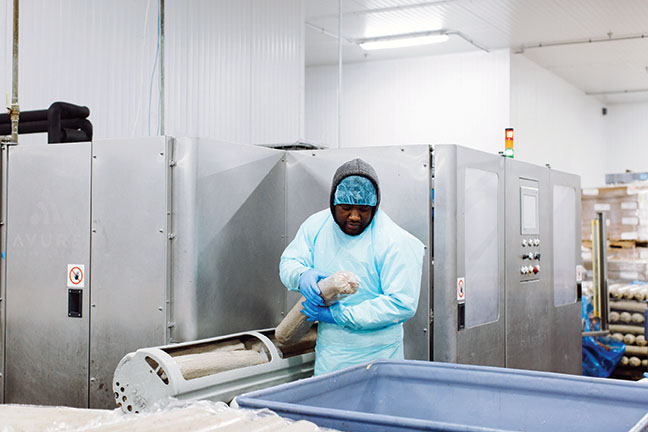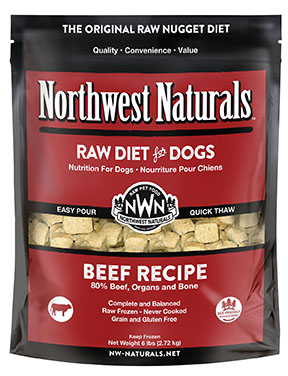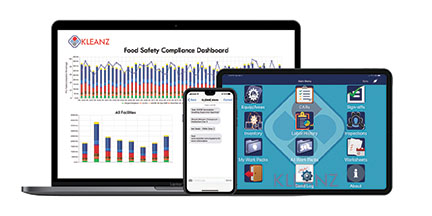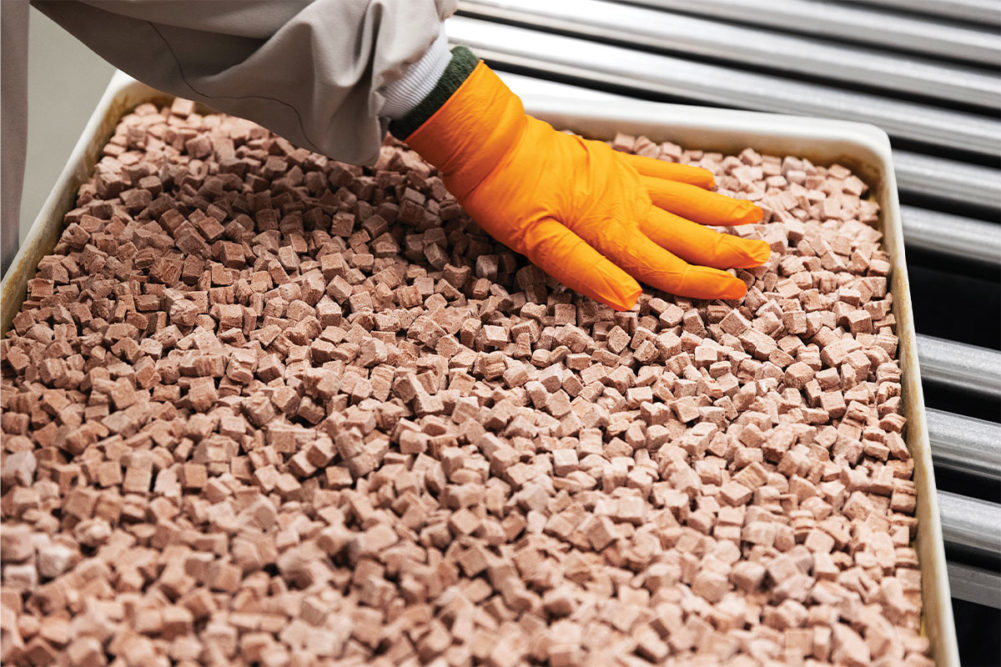This article was published in the March 2023 issue of Pet Food Processing. Read it and other articles from this issue in our March digital edition.
In a perfect world, eliminating pathogens in a processing environment would be simple. Ideally, processors would remove food safety risks during and after production with a few quick and easy procedures, safely sending pet food products away from the plant without concerns of further contamination. Pets and their owners would be safe from any potential illnesses and product recalls would be a thing of the past. Unfortunately, that perfect world does not exist in pet food processing — or in any processing environment, for that matter. And since foodborne pathogens are still a very real concern for processors and their end consumers (both the pets and their parents), mitigation techniques are a crucial element of every pet food operation.
Salmonella and Listeria monocytogenes are the largest biological hazards in pet food and treat production. Even though it’s rare for dogs and cats to become ill from these pathogens, they can pass on the bacteria to their owners. Humans that interact with contaminated pet food or animals that are carrying the bacteria can become sick. In addition, aflatoxin, which is a mycotoxin produced by molds and is common in grains and nuts, can cause serious illness or death in pets and humans.
Under pressure
One technology used to eliminate food safety risks and control pathogens is high pressure processing (HPP). HPP is a non-thermal technique which involves loading airtight packages into an HPP vessel or chamber and applying isostatic pressure (equal pressure on all sides) with water. The constant equal pressure from water inside the machine inactivates microorganisms that could potentially cause illness to both pets and pet handlers or food spoilage. Aside from the obvious food safety and shelf-life benefits, HPP has the unique advantage of not affecting taste, texture, appearance or nutritional aspects of the food.

Isostatic pressure is applied to food placed in the HPP chamber to eliminate foodborne pathogens and spoilage organisms. (Source: Northwest Naturals)
“HPP is a food safety technology,” said Errol Raghubeer, Ph.D., senior vice president of food science, JBT/Avure Technologies, Middletown, Ohio. “One of the benefits that you get using HPP in pet food production is you will eliminate the pathogens of concern — and it will not damage the nutrients. That’s one of the biggest concerns in the pet food industry, keeping the nutrients, such as vitamins and bioactive compounds, intact.
“When you inactivate pathogens like Salmonella, Listeria and E. coli, you’re also reducing spoilage organisms, so you get the added benefit of shelf-life extension,” he added.
Many processors of raw and freeze-dried pet food formulations, including Seward, Neb.-based Petsource by Scoular, utilize HPP as a pathogen control mitigation technique. Because the ingredients, including raw meat, don’t go through a thermal cooking process, such as extrusion or retort, the risks for foodborne pathogens are high.
“HPP is a non-thermal lethality process that kills harmful bacteria while preserving the nutritional benefits of the product. All of Petsource’s raw pet food blends undergo HPP and are tested for Salmonella and Listeria monocytogenes before continuing production,” said Steven Moore, vice president of food safety, quality, regulatory and innovation at Scoular.
As co-owners of Morasch Meats, a USDA meat processing facility in Portland, Michael and Steven Morasch looked to HPP technology as a way to keep their products safe from pathogens. They utilize HPP on their meat products as well as on the human-grade, raw frozen dog food produced under their Northwest Naturals brand.
“We did research and found that [HPP] eliminated the risks of Salmonella, E. coli, even Listeria in properly handled food products,” Steven Morasch said. “And we learned that HPP maintained all the vital nutrients in the food — the food enzymes. We made the decision to invest in that technology for that reason... Heat can kill off a lot of food enzymes, so HPP was the best method to use to protect the food.
“There’s complete certainty about HPP — just being as clean as you can be. When you put food product in the chamber to apply the pressure, every particle in the chamber receives the same amount of pressure to kill the pathogens. When you heat product, the cooking has to get to the core in order to get to the kill step, and you don’t get the kill step unless you add more heat. HPP has this unique feature of equalizing the pressure of everything that’s in the chamber at one time. It’s ideal for raw product.”

Northwest Naturals found that HPP technology is the best way to eliminate pathogens from its raw pet food products. (Source: Northwest Naturals)
Even though HPP is a time-tested method of controlling pathogens, Petsource ensures its freeze-dried pet food and treats are safe before continuing through the production process through essential testing and verification.
“Petsource tests its products for Salmonella, Listeria monocytogenes, and other microbiological quality indicators after high pressure processing, freeze drying, and packaging (as applicable). At each of those steps, all critical records are reviewed and verified by trained personnel before continuing through production or shipping to the customer,” Moore said.
Thermal processing
Radio frequency (RF) pasteurization is an alternative method available to pet food processors to help control pathogens. It’s a thermal process utilizing the moisture content of the product to generate volumetric heat throughout the bed depth or final packaging. RF is a non-ionizing form of energy the same as microwave, explained Lisa Mitchell, vice president of marketing for Millis, Mass.-based Radio Frequency Co.
“HPP is a non-thermal lethality process that kills harmful bacteria while preserving the nutritional benefits of the product,” said Steven Moore of Scoular.
Ingredients or even finished product are sent through the RF applicator for a validated and targeted temperature and hold time. Time and temperature are product dependent and determined through validation testing. Each RF system can be programmed with multiple “recipes” for numerous ingredients or products. All data is recorded for each product run.
“With conventional heating, the outside layers of the product may have to be heated to higher temperatures to get the appropriate pasteurization temperature into the center of the product mass,” Mitchell said. “But the long wavelengths of the radio frequency heat up the material volumetrically and very rapidly.”
According to the company, “The product is conveyed through the applicator [machine] and is heated to the target temperature rapidly and uniformly. The applicator cabinet is also conventionally heated to prevent radiational cooling. With bulk processing it then enters the heat retention zone, using conventional heating, for the required hold time. With product processed in-bag, the hold time can be validated on the repalletization and the time the bags take to cool down. Processing in final packaging prevents the opportunity for re-contamination.”
Radio Frequency machines can often provide 5-log reduction at lower temperatures in a shorter amount of time than conventional heating methods.
“We can achieve a 5-log reduction at between 185°F and 195°F, which is typically a lower temperature than more conventional thermal processes,” Mitchell explained. “And it doesn’t take the typically long processing time of conventional heating methods. Most of our complete processing times are between 7 and 10 minutes total.”
Safety and sanitation
Regardless of the techniques used to provide food safety protection in the processing environment, all processors need to have an effective plan in place and a system to ensure the job gets done. Nexcor Food Safety Technologies, Buford, Ga., offers solutions to help pet food processors plan, carry out and track all their food safety procedures.
“Our KLEANZ Food Safety and Sanitation Management system is an all-inclusive SaaS [software as a service] solution that targets executing food safety efforts,” said Randy Kohal, vice president, food safety and reliability. “KLEANZ drives risk mitigation by providing the tools for documenting all actions for a complete audit trail, aggregating data into dashboards for manager oversight, and real-time scheduling and task completion through mobile devices.”

Technology solutions can provide processors with digital tools to help design, train and track sanitation programs. (Source: Taryn Hickey, KLEANZ, Food Safety Technologies)
KLEANZ provides processors with digital tools to help design appropriate sanitation programs as well as to streamline training and tracking of the food safety programs they implement.
“KLEANZ includes features that allow test points and results to be compiled into dashboards and interactive maps for tracking areas of repeat failure,” Kohal said. “It gives management the knowledge to make quick decisions and attack areas of failure before they pose a risk to product and consumers.”
The digitalization of the sanitation program also prevents gaps in documentation and helps avoid human error.
“KLEANZ keeps all food safety documentation in one place, in real-time. This means that manufacturers are covered for any audits and can produce appropriate documentation when asked,” Kohal added.
While food safety risks in a processing environment will never be eliminated, using mitigation measures that are available can help pet food processors provide the safest pet food possible to their four-legged consumers.
Read more about pet food safety on our Operations page.





